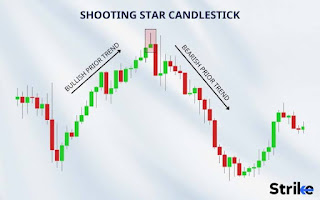The Shooting Star Candlestick Pattern
.jpeg)
.jpeg)
How to trade without losses? 7 golden rules
Trader level (Beginner)
Type of strategy (Universal)
Timeframe (1-300 m)
Assets to trade (Any)
Can you avoid losses? No way. Losses in trading are inevitable.
After all, like in any other business. But you can use simple rules and discipline to maximise your profits!
We're going to describe the rules in this article. But taking care of discipline in following them is your responsibility...
Good news: you don't have to avoid all and any losses. To make money, you just have to be in the black by the close of the day or at least the week.
For example, on an asset with returns of 80%, you may make 4 losing trades out of 10. And still, your deposit will be more than before you started trading!
Please note that 4 out of 10 is 40%, or fairly many losing trades, provided they are all for the same amount.
So, how can you still trade profitably?
Step 1: Key principles
- Stick to your trading plan and strategy.
This is crucial: there's no plan or system, there's no profit. There is a plan, there is a profit.
- More money on your deposit as you start trading makes it easier to trade.
If you lose $10 with a $1,000 account, you will not be too upset and will continue to go as planned. And if you only had $50 in your account, it could throw you off your stride, result in mistakes and the loss of the entire deposit.
Besides, you have 99 attempts to set the situation straight in the first scenario, and only 4 in the second. Simple math.
Step 2: Key money management rules
- one trade does not exceed 2-5% of the size of your account
- total trades you keep open at a given time do not exceed 10% of your account
This means that, by making trades worth 2% of your deposit, you can make up to 5 trades at a time.
Or 2 trades when one is 5% of your account!
- Think of a daily loss that is acceptable for you.
This is just in case trading “doesn't fly.”
For example, 15% of your capital. Once you have reached the limit, stop trading for at least a few hours. Regardless of how “tempting” the market situation looks. Even if the trade of the century is about to come up! Such hunches are an illusion.
Step 3: Basics of trading psychology
- Analyse the market carefully before and after the trade.
In the event of both profit and loss: it is vital to understand how to replicate success and how to avoid the same mistakes.
- Keep yourself under control.
A strong emotional background, whether positive or negative, affects trading.
Feeling happy, sad, irritated, fatigued causes mistakes. If you have these feelings while trading, take a break.
If such emotions overwhelm you even before you start trading, then... don't even start. Get back tomorrow, the market will still be there.
- Learn, learn, and learn again!
The market changes every day, and it can and should be explored.
There is a huge number of candlestick patterns, signals, tactics, and strategies that can significantly improve your results.
If you have a VIP account, feel free to contact your personal manager. They are a seasoned pro who will help you analyse your trading and give you personalised recommendations.
IMPORTANT!
Here's a secret: very few people make a killing on day one of trading. From our experience, those who follow the above rules succeed. So, do the same!
Comments
Post a Comment